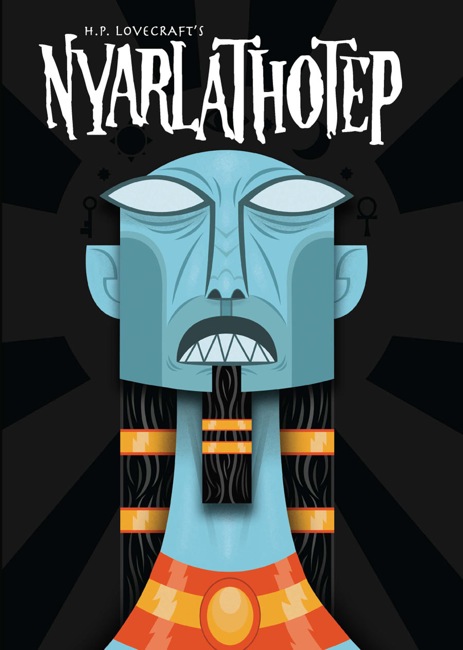Derleth Be Not Proud, Part Three: Autochthonic Masses Howling and Wet-Mouthed
Monday, February 23, 2009
posted by Steve Tompkins
 Print This Post
Print This Post
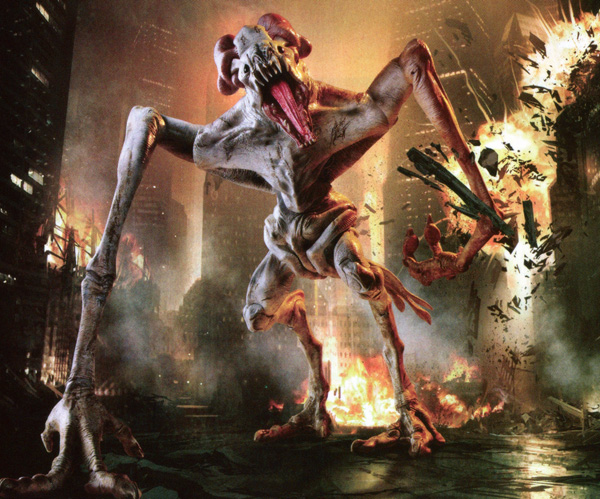
Part One: Hypersensitive, Not Hyperborean
Part Two: Cry ‘Havoc!’ and Let Slip the Hounds of Tindalos
In certain surroundings our entire being is made of eyes, every atom dilates to witness the haunting of the universe.
Thomas Ligotti, “Professor Nobody’s Little Lectures on Supernatural Horror”
A good critical overview or survey is courteously coercive in that we feel obligated to impose some sort of order and consistency on our own opinions. Having spent the better part of two weeks thinking about S. T. Joshi’s The Rise and Fall of the Cthulhu Mythos — better because the alternative was redrafting various cover letters yet again to try and suppress their ghostly, single-song soundtrack of “Brother, Can You Spare A Dime?” — I’d like to follow up Part One, which mostly engaged with Joshi’s comments on Robert E. Howard’s Mythos work, and Part Two, a wide-ranging look at Rise and Fall‘s treatment of “everyone else,” with subjective and selective suggestions about Mythos-mining. Those who can, do, and those who can’t blog; I’m about as qualified to offer such suggestions as were the walking loyalty oaths and newly-hatched ideologues who found themselves brattily supervising entire Iraqi ministries or provinces during the heady summer of 2003. But if nothing else, this Part Three has been a pretext for some enjoyable re-reading and re-watching.
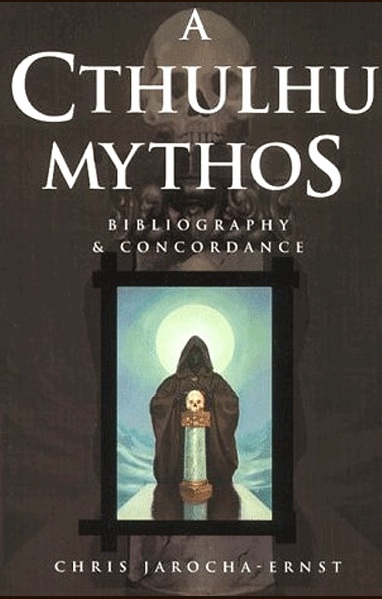
In Rise and Fall Joshi himself faces the fact that “It is, of course, impossible for any human being, within a reasonable time frame, to read all the multifarious contributions to the Cthulhu Mythos from 1926 to the present day — contributions that take the form of stories, novellas, novels, works appearing in online venues, and so forth.” Mythos fiction is as fecund as Shub-Niggurath on fertility drugs, and I just know it’s going to turn out that I’m remiss in not having read this or that story that not only approximated but improved upon one or more of my unasked-for recommendations. In a more solvent world Chris Jurocha-Ernst’s A Cthulhu Mythos Bibliography and Concordance (1999), Don G. Smith’s H.P. Lovecraft in Popular Culture (2005), Fantasy Flight Games’ The Art of H. P. Lovecraft’s Cthulhu Mythos (2006), and Daniel Harms’ Cthulhu Mythos Encyclopedia (2008), and a leaning tower of Chaosium collections would overtop the iMac; instead, I’m winging it with only a much-revisited copy of Andrew Migliore and John Strysik’s The Lurker in the Lobby: The Guide to Lovecraftian Cinema (2006) for companionship.
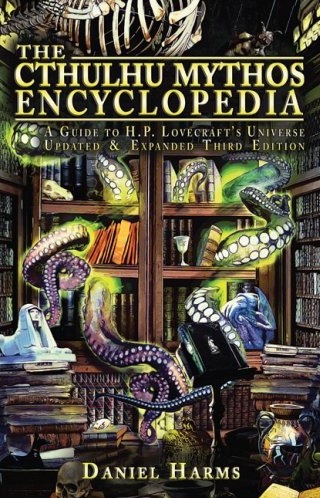
In Sesqua Valley and Other Haunts W. H. Pugmire confides that he revitalizes his own creativity by reopening “the real gems from Chaosium,” those “amazing Cycle books of Mythos fiction edited by Robert M. Price, himself the author of some superb Lovecraftian fiction.” So what floats whose boat on the black seas of infinity remains an enigma. I realize that no one sets out to write a mediocre Mythos addendum (although I’m fixing to eye Lin Carter narrowly should I meet up with him in the underworld), but Dan Clore gets it right in his “The Lurker at the Threshold of Interpretation”: too much Mythos fiction is culpable in “inverting Lovecraft’s open-ended, anti-systematic, ceaselessly productive practice into a celebration of him as the inventor and codifier of a closed Mythos that allows breathing room only in so far as newcomers may add additional creatures and entities to fill the slots left open by Lovecraft.”
I also side with the at least-anecdotal consensus that Dead But Dreaming, the Kevin Ross-edited anthology abortively released in 2002 and resurrected by Miskatonic River Press in 2008, makes many of the right moves, either out among the stars our detestation (to steal from Brian Aldiss’ Trillion-Year Spree) or down to the bottom of our gene pool. My sweet tooth is for one of the key assumptions listed in Robert Seufert’s “Cthulhu Quartet: Musings on H. P. Lovecraft,” that “the concept of ‘humanity’ itself is a construct imposed on a being (or set of beings) considerably more complex and mysterious than the idea of humanity would suggest and governed by impulses and interests quite different from those normally associated with the human world,” and in that context Dead But Dreaming, which includes Ramsey Campbell’s “The Other Names,” is a brimming bag of Halloween candy.
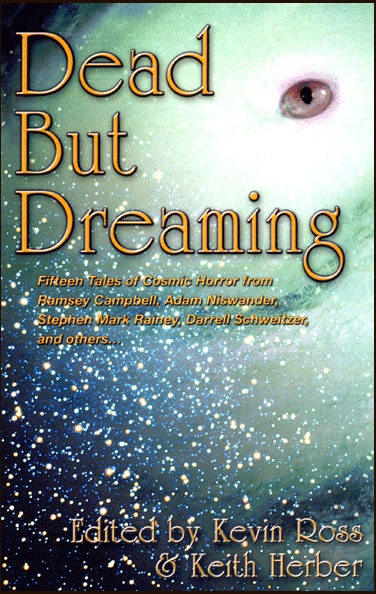
On the other hand, the autophagous intrareferentiality of Robert M. Price’s collection Blasphemies and Revelations (2008) leaves me cold, or rather leaves me insufficiently chilled. Life is too short (and too designed for dullards) to put up with sumps of scholasticism from which invisible footnotes rise drippingly to engulf the text. As for riding shotgun on Cthulhu’s stagecoach or shivering his timbers in collections like Frontier Cthulhu or High Seas Cthulhu, with all due respect for the sincerity (and sporadic creativity) of the contributors, changing the vestments of an empty ritual only hyperadrenalizes a portion of the congregation. I’m reminded of Douglas Winter’s introduction to Caitlín R. Kiernan’s Tales of Pain and Wonder (2000), wherein he disparaged the gimmickry of gimcrack horror anthologies: “The stories presented in these books seem to have been written about nothing but being part of the anthology; they are, to be blunt, stories written to fill space.”
For completists and collectors such comments will register as merely the buzzings of insects from Shaggai. The Lumleyite school will demand, what are your mythographic credentials? For some time now Howardists have rolled their eyes like ball bearings when the most petulant of the aging and attrition-thinned de Camp and Carter groupies demands “How many Conan novels have you written?” (to which the correct answer would be “None, just like De Camp & Carter”, but the same retort has been a weapon of critic-obstruction in Mythos circles from the Derlethian era to the present, as is evidenced by Robert M. Price’s 1984 interview with Brian Lumley, in which the author backhands “supposed and largely self-acclaimed Lovecraft authorities,” and then elaborates:
Oh, I’ll explain the vitriol: these people eat, drink, sleep and fart HPL — to his detriment! What they are, chiefly, is this: they are frustrated would-be fictioneers! Can you seriously imagine any person who so loves Lovecraft and his work — a person, that is to say, with an ounce of creative talent, with an ounce of imagination — can you honestly imagine such a person who would not try his hand at writing a Mythos or Lovecraftian story? Of course they would — but they can’t! And so they decry and deride those of us who can.
The supposition here is that anything, anything at all, is better than the purist idyll of a decorous nothing-newness surrounding the canon: the original stories by the original creator installed in a Forbidden Zone bristling with state-of-the-art motion detectors. But that is obviously a false choice; just as many Howardists will defend The Road of Kings, or John Hocking’s Conan and the Emerald Lotus, or Doug Moench and John Bolton’s Kull: Demon in a Silvered Glass, many Lovecraft aficionados are delighted by the Mythos stopovers of Ramsey Campbell and T. E. D. Klein and Thomas Ligotti.
So, discounting Lumley’s graphomaniacal straw man, what do some of us want? For starters, stories that discommode, perturb, unsettle (S. T. Joshi for his part has written “the purpose of supernatural fiction, I am convinced, is not to horrify or frighten as such; it is to make one uneasy“. Now is not the time, let alone the timelessness, for subgenre-Muzak, phatic discourse. Having encountered W. H. Pugmire’s stories, I’m more open to Mythos fiction created out of a need for acceptance, but acceptance is not the same as reassurance, as the nightgaunt gentled and exhibited in a petting zoo. We want what Fritz Leiber called “a progressive disintegration of man’s mind and world.” And supposing the disintegration were to be progressive in more than one sense? How about a Mythos story in which the cultists were technocrats educated at the elite institutions of post-industrial democracies rather than clannish swamp-dwellers and other civilizational non-participants? How about a novella from the POV of a human, or formerly human, fifth columnist and sleeper agent, a De Castro or Curwen. What price could a Man Who Sold the World expect to receive for his wares?
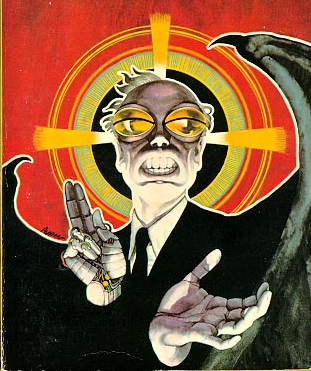
Discussing the Rhode Islanders’ burning of the revenue ship Gaspee in The Case of Charles Dexter Ward as “one step in the blotting out of unwholesome images,” Joshi writes in The Weird Tale
This enormously clever stroke again underscores Lovecraft’s whole conception of history — that conventional political and social history masks something so nameless and sinister that it can only be dimly hinted. In this sense the technique of the novel itself, whereby we are forced constantly to read between and under the lines of the superficially ordinary events, exemplifies the very point it is making.
Lovecraft was as much a precursor of William Burroughs, Thomas Pynchon, and Don DeLillo as of Stephen King. The Mythos affords us conspiracy theories swollen to become ontology itself, although an inflexible indifferentism is an obstacle here. Indifferentism wounds us in our amour-propre, yes, but can also frustrate us in our storytelling synapses, rule out the dilated pupil delights of paranoia and the persecution complex. Names like Burroughs and Pynchon point us to the pot of gold at the end of gravity’s rainbow. Wrapping up the Lovecraft section of The Weird Tale, Joshi commented “The subsequent history of weird fiction is at the moment very confused: science fiction has broken off from it.” Reunions have been of the essence ever since. Lovecraft was the New Weird of his age, and is still “newer” than most of his epigones, whose characters should consider getting out of the stacks and out among the stars. If a superior state of cosmicism is to be attained, meeting the cosmos halfway is the way to start.
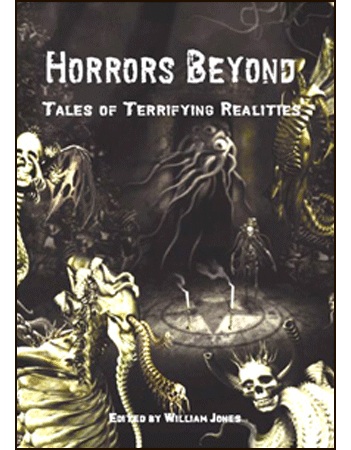
Space exploration would have been as irresistible to HPL as the Antarctic expeditions of yesteryear, and I’m grateful for the existence of a story like Stanley Sargent’s “Their Love of Craft,” wherein we find ourselves on an “experimental Planet 903.” When I returned to Childhood’s End (1953) after my first exposure to Lovecraft, Arthur C. Clarke’s classic novel suddenly seemed like the Mythos sunny side up — although the sunniness is only relative and freighted with awe at the teleological task-mindedness of Karellen & Company and the eventual “upload” of human consciousness into the Overmind. Time will end with the escape of The Mad Mind of Against the Fall of Night (1948) and the expanded version The City and the Stars (1956), from its imprisoning Black Sun — yes, Clarke had read his share of HPL.
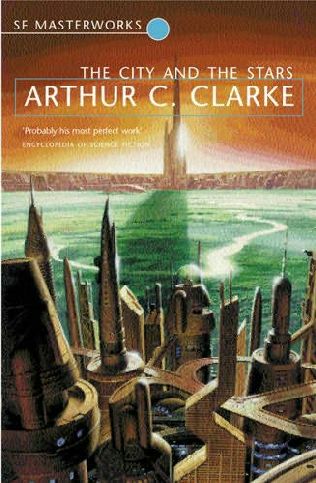
Imagine the discovery in a lunar crater of TMA-1, the black monolith of 2001: A Space Odyssey, only told from a Lovecraftian perspective: Perhaps Miskatonic’s most renowned xeno-linguist is summoned to the moon, and after cracking the code of the alien glyphs, realizes that millions of years ago he himself inscribed the message intended for earthlings? (I was feeling pretty pleased with this paragraph until I discovered that Robert M. Price, introducing Clarke’s “At the Mountains of Murkiness” parody in The Antarktos Cycle, got there a decade before me)
We have no better dramatization of those unforgettable first sentences in “The Call of Cthulhu” than the J. G. Ballard stories collected as Memories of the Space Age (1986) and published, with sublime fittingness, by Arkham House. It was not meant that we should voyage far: Ballard takes the enterprise synonymous during the New Frontier and its aftermath with the future and relegates it to the past of another more pessimistic and repercussive future of his devising. The space program may have been a tripwire-tugging folly, our extra-orbital forays a violation, “the eating of a special kind of forbidden fruit.”
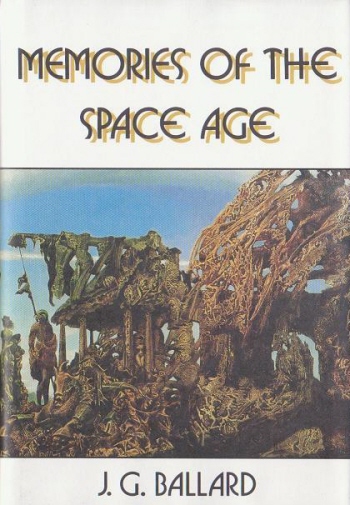
A character in “Myths of the Near Future” says “thirty years ago we opened a door in the universe,” and through that door, we learn in “News from the Sun,” there came a “time-plague,” a contagion that spread outward from Cape Canaveral so that all of Florida is now a “poisoned land,” a kind of ontological hot zone. And the Icarian crash-and-burns recur unceasingly in the psyches of the space program’s survivors. Not much of a nudge would be needed to move notions like these into Mythos country. As it happens, Paul Di Filippo asked Ballard about HPL in a 1991 interview: “Could I get your reaction to the rather bizarre assertion that your work bears secret affinities to that of the cult horror writer H. P. Lovecraft, with its emphasis on ‘alien geometries,’ ‘the outsider,’ and landscapes of mental stasis?” To which Ballard replied “I’ve never read him, but there may well be correspondences.”
The virtual realities, mnemonic trompe-l’Å“il, and lysergic cosmicism of Philip K. Dick, Lovecraft’s fellow inductee in the Library of America pantheon, would have been the poorer were it not for the earlier writer. The very title of The Three Stigmata of Palmer Eldritch (1965 invokes Lovecraft, and Dick’s evolution therapy and miracle drug Chew-Z — “God promises eternal life. We can deliver it” — could easily have been instruments of subjugation in a Mythos context. Eldritch himself, a renegade industrialist who went missing out in the Proxima Centauri system, has crossed over from capitalism to cosmicism; choosing the novel as his all-time favorite work of horror, Tad Williams writes “A crack in reality has opened and Palmer Eldritch is what oozed through; his presence spreads like a disease.”
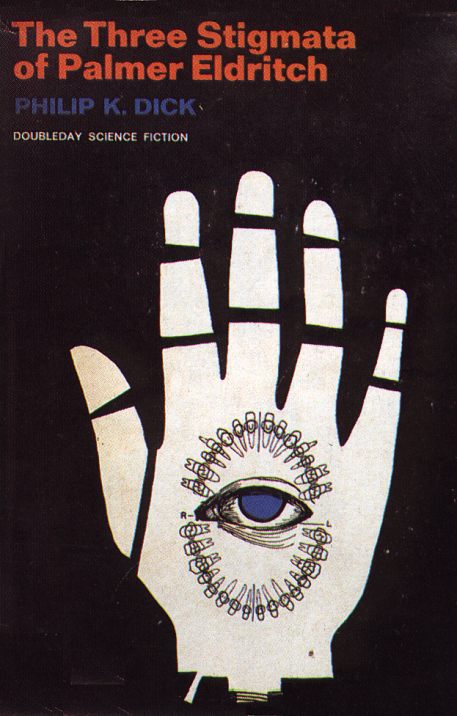
That famous Lovecraft revelation “Not in the spaces we know, but between them, They walk serene and primal, undimensioned and to us unseen” prompts the thought that even we humans have known another variety of space of late, where each of us is his own NASA. “The Mound” takes aim at the “desire to escape out of physical life into a half-spectral state of electronic dispersal,” and Tsath could well be on our side of the digital divide. With impeccable timing, William Gibson’s Neuromancer arrived in the ulteriority-intensive year of 1984, and the author has grazed the Mythos as he operates “at the intersection of paranoia and technology” ever since. Gibson’s rogue AIs engineer their own theophanies in cyberspace, assume the identities of voodoo Powers; what if they’d chosen, or been chosen by, the Great Old Ones instead? If computer networks are “mass consensual hallucinations,” could the consensual nature of such environments be an illusion devised in R’lyeh? I hanker for a story in which Nyarlathotep takes over YouTube and Google — all the evidence suggests he’s already running Wikipedia.
We owe to Terentius the sentiment homo sum: humani nil a me alienum puto, nothing human is alien to me. The Mythos-credo should be, everything human can become alien to me. Wherever we go, They will be there ahead of us, in, say, nanotechnology and genetic engineering — suppose we found the Great Old Ones waiting for us in the recesses of the human genome? Before becomes the only After. Perhaps Great Cthulhu was telepathically browbeating Scott Fitzgerald when the latter drafted the “borne back ceaselessly, ceaselessly into the past” coda of The Great Gatsby.
Lame Mythos fiction marks time instead of engaging in a danse macabre to its music. Why not a saurosapien story set near the close of the Cretaceous, one positing a race of intelligent dino hunter-gatherers, or even an urbanized civilization, weighed in the scales and found wanting by some of Lovecraft’s colonists from the stars? “You know what killed off the dinosaurs, Whateley? We did, in one barbecue,” Neil Gaiman’s Cthulhu volunteers. Or could the Great Old Ones be the most inconvenient truth behind global warming, an attempt at piscine terraforming by the Deep Ones? Recall that in “Nyarlathotep,” the narrator speaks of a “demoniac alteration in the seasons.”
Let’s bring in some actual authors. Between The Great and Secret Show (1989), in which Clive Barker introduced the Iad Uroboros, entities the merest hint of whose inconceivability oneirically inspires most human psychosis and socipathy, and Everville (1994) it was my hope that Ramsey Campbell’s fellow Liverpudlian might in effect unify the Dream-Quest Lovecraft and the “Call of Cthulhu” Lovecraft. Alas, as David Langford put it in his review of Everville, “the Iad gets a terrific build-up as the ultimate world-drowning abomination from the dark side of the metacosmic dream-sea Quiddity,” only to underperform in an expectation-squashing, frisson-squelching anticlimax that “achieves absolutely nothing either creative or destructive.” Everville was the first disappointing Barker novel, and the Iad was (were?) a big part of the reason why.
John Skipp and Craig Spector’s The Scream (1988) is set to a Mythos beat but blasted through hard rock amplifiers, and Kathe Koja’s Bram Stoker Award-winning first novel The Cipher (1991) — imagine a grunge From Beyond in which human wrongness and the cosmic kind bring out the worst in each other– made Lovecraft a naturalized citizen of the Nineties. Bas-Lag, the imaginary and incendiary world “unapologetic pulpist” and New Weird spearhead China Miéville introduced in Perdido Street Station (2002) could be a much sootier Kadathian realm wracked by vicious class warfare. Miéville’s introduction to At the Mountains of Madness: The Definitive Edition (2005) is frankly coruscating, as when he hails Lovecraft’s Shoggoths as “a hysterically hallucinated coagulum of the victorious insurgent masses” and “the pulp-artistic pinnacle of class terror.”
In the third Bas-Lag novel The Iron Council (2004) Miéville’s multisapient megalopolis of New Crobuzon blunders into war with Tesh, the distant City of the Crawling Liquid, and its forces endure cacotopic zones “where the land and the air and time are sick” as well as Tesh soul cannons, “efrit winds,” a moon elemental, and a “massacre spirit, the massenmordist.” “Grave-pale and simian ghuls” are given a slink-on part. More explicitly Mythos-minded is “Details,” which originally appeared in John Pelan and Benjamin Adams’ The Children of Cthulhu (2002), but is easily found in Miéville’s Looking for Jake collection. The narrator becomes acquainted with a Mrs. Miller, who when younger went in for the study of certain meaning-enhanced walls: “Alternatives appeared to me. Messages written in the pockmarks. Insinuations in the forms. Secrets unraveling. It was bliss.” But all too soon “something old and predatory and utterly terrible” returns her stare.

“You have to be careful with all of them,” she cautions the narrator.” Every single one of them on that other side of things is a tricksy bastard, who’ll kill you soon as look at you, given half a chance.” Among the worst are “the gnarly throat-tipped one” and “old hasty,” whose full names it is a simple matter to suss out. Despite the precautions that have made her a shut-in, Mrs. Miller has an increasingly hard time of it: “My memories aren’t mine anymore. Not even my imaginings.” She describes what is befalling her as “colonising,” and with an insight worthy of Thomas Ligotti we realize that perception itself is now a grimoire. At the end, Miéville’s narrator can’t resist a closer look, and approaches with “a dumb curiosity far stronger than any fear.” That of course, is the dominant impulse of Mythos-fodder.
The story “Looking for Jake” features a rubberized reality not unlike that of John Carpenter’s In the Mouth of Madness as “dirty entropy” plays across, and with, London. Changes to the food-chain ensue: “. . .the unseen flapping things had burst into existence full-grown and ravenous. In the first few hours they swept the skies quite clean of prey.” Commuters on the trains appear dehumanized in ways that far exceed the indignities of rush hour. A Telegraph headline blares “Autochthonic Masses Howling and Wet-Mouthed.” Lovecraft would have delighted in incidents like this:
The last time I picked up the receiver something whispered to me down the wires, asking me a question in a reverential tone in a language I did not understand, all sibilants and denials. I put the phone down carefully and have not lifted it since.
Decay spreads over the tottering cities of men in “The Call of Cthulhu”; heroic fantasy, in which decay spreads over the tottering kingdoms of men, can offer the Mythos some unfamiliar territory. S. T. Joshi insists early in The Weird Tale that “In an imaginary-world fantasy — like Dunsany’s Gods of Pegãna or Tolkien’s Lord of the Rings — there can be no such thing as supernatural horror because the real world and its laws are not assumed to exist.” He then quibbles with himself, allowing for the possibility of “a sort of pseudo-ontological horror reflected in the responses of characters,” but a few lines later lays down the law: “Fantasy never truly inspires the sentiment of ontological horror.” I’m unconvinced; for starters, Middle-earth and the Thurian/Hyborian world of Kull and Conan are not imaginary worlds in the Dunsanian or Eddisonian sense, but our own green earth (although that, too, is a “mighty matter of legend,” as Aragorn points out in The Two Towers). And in the settings that heroic fantasy prefers, sorcery and more-than-human-malice cast even longer shadows in the relative absence of science and technology. A character in “Masquerade of a Dead Sword: A Tragedy,” the closest thing to a Thomas Ligotti sword-and-sorcery story, proclaims “But I have provoked another thing, a new madness which arrives from a world that is on the wrong side of light.” When we hear from Beregond of Minas Tirith what it is like to live next door to the willed wrongness of Mordor, when Orastes divulges that human history will become a text the pages of which will turn back to an appalling chapter long past in The Hour of the Dragon, when Kossuth rises to rule again in David C. Smith’s Oron, the horror is unalloyed for being “pseudo-ontological.”
Joshi’s comments on Fritz Leiber’s “Adept’s Gambit,” a sword-and-sorcery classic the early draft of which actually benefited from Lovecraft’s editorial input, only capture about half the story: “. . .in its picaresque narrative, its vivid character portrayals, and its liberal doses of humour and buffoonery it is about as far from the bulk of Lovecraft’s dark, brooding, non-humanocentric work as can be imagined.” And yet a character stresses “Some whys, if you follow them far enough, lead over the rim of reality.” Of Leiber’s Anra Devadoris and the Old Man we are told: “They were religious, with this difference: their ritual was degradation, their aim a world chaos played upon like a broken lyre by their master minds, their god, the quintessence of all evil, Ahriman, the ultimate pit.” After one revelation Fafhrd feels the “wholesome world [is] only a film on primary abominations,” and the Castle Called Mist is “only partially emerged from some unthinkable outside.” The brightness of the swordsmen’s repartee, the brilliance of their ripostes, only accentuate the surrounding Lovecraftian blackness.

Mythos genes are as non-recessive in post-Howardian heroic fantasy as fishiness in the citizenry of Innsmouth. Sword-and-sorcery could not do without its Lovecraftsmanship; at his blog, Charles R. Saunders recently talked about the Things on the transdimensional doorstep and whisperings in darkness of his Imaro novels, as here in The Trail of Bohu (2009):
The bodies thus revealed were horrible to behold: an unholy agglomeration of columnar legs; long, sticklike arms; and bloated torsos covered with tentacles that glowed with a green light that matched the bolts blazing from the spheres. The tentacles grew rigid, tumescent, pointing like a multitude of green fingers toward the nineteen blazing orbs. Then the tentacles ignited into small infernos of emerald fire, merging with the lightning from the spheres. The misshapen bodies of the Erriten shuddered and rocked with the mystic forces that buffeted the walls of the chamber. But their faces were masks of serenity and fulfillment.
For the Erriten were communing with their gods.
Almost. . .
The dimensional barrier that separated the Erriten from the Mashataan was almost gone. The Erriten could feel the vast shapes of the Demon Gods moving restlessly beyond sight, beyond reach. They could hear the Mashataan speaking to them inside their heads, their voices spanning the gulf between two planes of existence.
Obviously Saunders’ Mashataan are a winning example of what we might style the call-and-response-of-Cthulhu. And please indulge me in returning to the point about the relative hospitality of heroic fantasy, which is generally pre-industrial in its periodicity, to the Mythos mystique: in Lankhmar and Nyumbani and the Hyborian kingdoms, unlike stories by Derleth or Robert Bloch, there is no chance that nuclear weapons will be used (problematically) against a Great Old One. In this context, after what seemed like strange eons, of Richard Tierney’s Simon of Gitta extravaganza The Drums of Chaos (2008) is a most exceedingly rocking event.
In ‘Through Hyperspace with Brown Jenkin” Fritz Leiber describes C. S. Lewis’ Out of the Silent Planet as “an interplanetary novel which reads as if it had been written to satisfy Lovecraft’s criteria,” and for an instant a phantasmal link between the Weird Tales greats and the Inklings shimmers before us. Are there others, or links between Lovecraft’s cosmos and modern epic fantasy in general? Dark Lords, like Great Old Ones, frequently originate Outside, and we often find them imprisoned or immobilized as an epic fantasy gets underway, after prehistoric escalation-spirals with their demiurgic opponents that boil the seas and crumple the continents.
The grand-daddy of all subsequent Dark Lords is Melkor/Morgoth, “thrust out into the Void” after the War of Wrath that ended the First Age. Tolkien has this to say of his Creation-menacing creation in “Notes on Motives in The Silmarillion“:
Melkor was not Sauron. We speak of him being ‘weakened, shrunken, reduced’; but this is in comparison with the great Valar. He had been a being of immense potency and life. . .the dark spirit of Melkor’s ‘remainder’ might be expected, therefore, eventually and after long ages to increase again, even (as some held) to draw back into itself some of its formerly dissipated power. It would do this (even if Sauron could not) because of its relative greatness. It did not repent, or turn finally away from its obsession, but retained still relics of wisdom, so that it could still seek its object indirectly, and not merely blindly. It would rest, seek to heal itself, distract itself by other thoughts and desires and devices — but all simply to recover enough strength to return to the attack on the Valar, and to its old obsession. As it grew again it would become, as it were, a dark shadow, brooding on the confines of Arda, [Earth] and yearning towards it.
That brooding and yearning, plus the sinister implications of “other thoughts and desires and devices,” might form the subjects of something very like Mythos fiction. Of course in their every gambit, ploy, and stratagem Dark Lords are the gloating, over-invested opposite of “indifferentist” beings; Morgoth micromanages the dooms of Húrin, Túrin, Morwen, and Nienor in The Children of Húrin. But he, Sauron, Lord Foul, Shai’tan, and the others are the only rivals of the Great Old Ones in popular culture as post-Satanic embodiments of radical, transhuman evil, and more study of differences and similarities would be helpful.

In Rise and Fall Joshi reserves “the multi-faceted realms of media adaptations” for “another day,” and I will similarly leave comics, animation, and gaming for better-situated surveyors, but at least one horror movie belongs here. As much as I appreciate the HPL-by-way-of-H. R. Giger in Alien, John Carpenter’s Prince of Darkness (1987) mashup of theoretical and theological apocalypticism, in which humanism just might bleed to death from cutting itself with cutting-edge physics, as well as his subsequent In the Mouth of Madness (1995) a Lovecraft-and-King combo platter with some metafictional flavoring reminiscent of Thomas Ligotti’s masterly “Nethescurial,” it’s Paul W. S. Anderson’s Event Horizon (1997) that repays evaluation as a mostly missed Mythos opportunity. The film’s half-present premise, for which too many of its scenes play like one long trailer, taps into Richard Tierney’s remark that both “The Shadow out of Time” and At the Mountains of Madness “turned the whole universe into a haunted house, so to speak, linking the findings of modern science to the flavor of Gothic horror.”
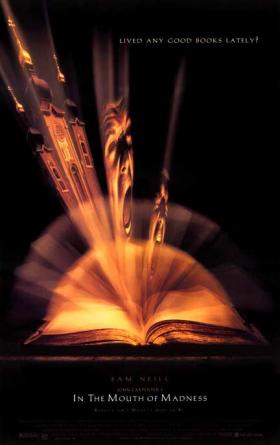
The screenplay by Philip Eisner (with some jumper-cabling by Andrew Kevin Walker of Se7en fame) flirts with Lovecraftian vistas of “cryptic and unbounded outer space,” and over the past 11 years Event Horizon has accrued a cult audience won over not so much by the film as by what the film could have been. Bravura production design and art direction almost succeed in compensating for script-and-performance vulnerabilities: here we have the spaceship as necropolis, with cyan-green corridors and chambers either cathedral-esque or cloacal. Its mission the testing of technology that can create a dimensional portal by folding space-time, its optimum destination Palmer Eldritch’s old stomping-grounds of Proxima Centauri, the Event Horizon is launched in 2040, vanishes from humankind’s ken, and then reappears orbiting Neptune. Whereupon a second ship, the Lewis and Clark, is dispatched to reconnoiter-and-rescue, or at least retrieve flight records. As in Ballard’s “Myths of the Near Future,” a door to the cosmos has been opened, and that door is a two-way entrance, which is where Lovecraft comes in.
Paramount, the studio behind the movie, proved a captive of its own mostly profitable Star Trek paradigm, and deep-seated discomfort with tonal darkness, a truncated postproduction schedule and executive suite overreactions to troubling test-screenings left us with a pulled punch, a vision of hell harrowed by hesitation. Having tussled with conceptualizing “Hell and the Devil,” the creators served up glimpses of an inferno more Dante, Bosch, and Brueghel than Lovecraft. They found it much easier to splice in slaughterous snippets than to rack their imaginations for radical ab-normality, ontology reduced to a plaything for powers darker than the interstellar night.
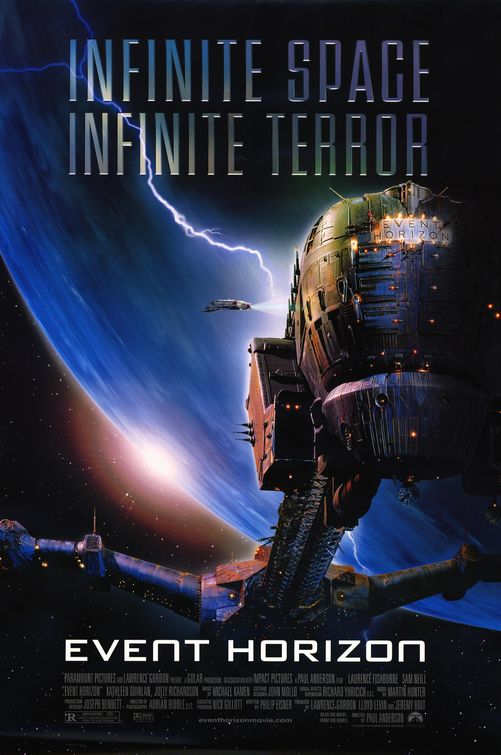
And yet Sam Neill’s Dr. Weir seems to know that the old Sunday sermon framework is too quaint when he says “Hell is only a word.” Of the Event Horizon, revealed to be both ghost-ship and host-ship, Weir claims “I built her to reach the stars, but she’s gone much, more farther than that.” Dreading along the same lines, Jason Isaacs’ character says “Who knows where it’s been, what it’s seen, what it’s brought back with it.” A “dimension of pure chaos, pure evil” is promised: “Where we’re going we won’t need eyes to see.” But then the movie, a rare chance for something more, is over (Sam Neill, however, should receive some sort of Deathtime Achievement Award for starring in the two most rewatchable quasi-Lovecraftian films of the Clinton years). Lovecraft himself might have looked upon the film as a missed opportunity, as in different ways were Danny Boyle’s Sunshine (2007) and Stephen Soderbergh’s Solaris (2002). He would certainly have applauded the reaction (to the privileging of an anthropocentric romance by Soderbergh and George Clooney) of the latter’s source novel author Stanislaw Lem: “I only wanted to create a vision of a human encounter with something that certainly exists, in a mighty manner perhaps, but cannot be reduced to human concepts, ideas, or images.”
We’ve all seen too much settling for the baiting of hooks with bookworms. I wish today’s Mythos-miners would do more with the disclosure, way back in ‘The Call of Cthulhu,” that “the Great Old Ones spoke to the sensitive among [humans] by moulding their dreams” (W. H. Pugmire, it is clear, is already both a molder and a moldee). Peter Straub has noted “For writers, who always feel marginalized, the notion that wounded outcasts are uniquely equipped to receive deep-level transmissions cannot help but be seductive.” The sensitive, the wounded, can range from a mass market shifter of units like John Carpenter’s Sutter Cane to Clark Ashton Smith’s Cyprian Sincaul, whose time on the far frontier of artistic overreach has left him “lean, harsh, vehement, with an air of pride and penetration that [is] Luciferian.”
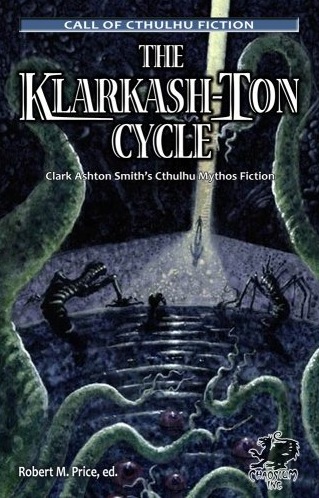
Sincaul appears in “The Hunters from Beyond,” which was not often classified as a Mythos story before Robert M. Price’s The Klarkash-Ton Cycle (2008) but is worth our while the doubly tortured artist’s version of the Faustian bargain, a non-musical version of Robert Johnson’s deal-making at the crossroads.
In their “Story Notes” appendix to The Door to Saturn: The Collected Fantasies, Volume 2, Scott Connors and Ron Hilger trace Smith’s mutable assessments of “Hunters” — August Derleth is, as ever, quick with a suggestion, although he manages to avoid offering to loan CAS a star-stone: “I daresay if you wanted to you could make it into either a long space story (pursuit of those hunters from beyond, etc. etc.) or a first rate horror story with a perfectly ghoulish climax.” Wright rejected the story: “It is not nearly as convincing or thrilling, for instance, as Lovecraft’s ‘Pickman’s Model,’ to mention a story of similar theme.” Which moves Connors & Hilger to comment, “this may have stung a little, since Smith acknowledged that story as the inspiration for his own.” It is certainly endearing that a story so obviously indebted to HPL should namecheck him; Sincaul confesses ‘I wanted to do in sculpture what Poe and Lovecraft and Baudelaire have done in literature, what Rops and Goya did in pictorial art.”
Granted, the story’s San Francisco setting is not rendered with anything like the vividness of, say, Leiber’s Our Lady of Darkness; the energy goes into word-painting, or perhaps sculpting, the Hunters with truly “chancreous” gusto. Yes, they are reminiscent of the ghouls in “Pickman’s Model,” but Smith is the superior portraitist in capturing their “peculiar mingling of primal bestiality and mortuary putrescence.” And Smith’s narrator, weird fictionist Philip Hastane, is of more interest than Lovecraft’s mouthpiece in “Pickman’s,” especially when his cousin Sincaul reproaches him for artistic timidity, his reluctance to seek Outside inspiration. For me Derleth was way off in deeming Smith’s ending “just a little weak,” and that’s due to the presence of Marta Fitzgerald, Sincaul’s model-and-mistress. Yes, she endears by being beautiful and mostly nude, but her fears for her lover, although they flirt with the Lovecraftian no-no of “catchpenny romanticism,” are convincing and her own fate, as a soul-shriveled husk derisively returned by the Hunters, much more disturbing than would be the hauling-off of Sincaul to a hell-dimension: “She was like an empty cerement retaining the outward form of that which the worms have eaten in their mausoleum darkness.”
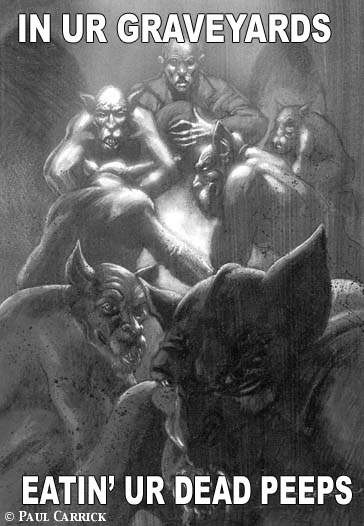
One of Thomas Ligotti’s newer stories, “The Shadow, The Darkness,” also explores the abhorrent terminus where the bullet-train of creative ambition deposits a few of its passengers. Reiner Grossvogel achieves notoriety and a nest egg worthy of his surname (Grossvogel = Big Bird) as “a one-man artistic and philosophical freakshow” after surrendering any illusions of corporeal and spiritual autonomy. The story’s narrator, one of the artist’s hangers-on, responds to “a black snow falling from a black sky” with a cosmic reverie:
There was only this consuming, proliferating blackness whose only true and final success was in merely perpetuating itself as successfully as it could in a world where nothing exists that could ever hope to be anything else except what it needs to thrive upon. . .until everything is entirely consumed and there is only one thing remaining in all existence and it is an infinite body of blackness activating itself and thriving upon itself with eternal success in the deepest abyss of entity.
(Shades of Tolkien’s Ungoliant, or Morgoth filling an otherwise emptied universe with his own solipsism: of his “sheer nihilism and negation” we’re told in “Notes on Motives in The Silmarillion” that “even left alone he could only have gone on raging till all was leveled again into a formless chaos”
For contemporary weird fiction Ligotti is of course Arthur C. Clarke’s Black Sun or one of China Miéville’s cacotopic zones. W. H. Pugmire appends to his “The Heritage of Hunger” an admission that “This tale was a lot of fun to write, but I know it is little more than amusing entertainment. We’d all like to be Ligotti, but some of us are doomed to be Derleth, alas.” Pugmire himself is no more Derleth than he is a trilobite, but my guess is Ligotti would be bemused at the thought of anyone wanting to be him. In his new Poe: A Life Cut Short, Peter Ackroyd quotes that earliest American grandmaster as having said “I have often thought I could distinctly hear the sound of the darkness as it stole over the horizon.” Ligotti apparently hears little else; we of course fervently hope that he will still be writing stories as only he can a century from now, but it is difficult to read his many declarations about existence as a nigh-unbearable affliction without thinking of Kent’s words in King Lear: “O! Let him pass; he hates him/ That would upon the rack of this tough world/ Stretch him out longer.”
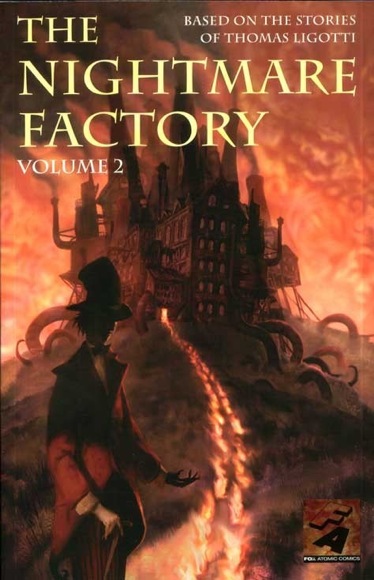
In Rise and Fall Joshi deems Matt Cardin’s 2005 “The Master’s Eyes Shining With Secrets: H. P. Lovecraft and His Influence on Thomas Ligotti” an “interesting — but to my mind not entirely convincing –qualification of or rebuttal to” his own take on Ligotti in The Modern Weird Tale. For Cardin, despite venerating Lovecraft Ligotti dwells “more upon the horror of deep insideness, of the dark, twisted, transcendent truths and mysteries that reside within consciousness itself, and find their outward expression in scenes and situations of warped perceptions and diseased metaphysics” — a differentiation weirdly anticipated by a remark of Lovecraft’s about Poe, in a letter to Fritz Leiber: “His infinity was indeed within — the wall of horror and darkness which is the true though unrecognised human spirit.”
Cardin’s cheekiness lies in the fact that having positioned Lovecraft at a creative crossroads near the rejection-scarred end of his life, he then speculates that the Providence-based author might have plunged into the psychological interior, and hence Ligotti-ward. The essayist admits ” . . .the idea that I have been advancing — that the different form of writing the middle-aged Lovecraft inchoately desired to produce may have been the very form of writing that Ligotti is producing today, and that both may have ultimately longed to write in an impossible godlike style — is of course a categorically unverifiable conjecture.” In effect Ligotti becomes not just Lovecraft’s heir, but the Lovecraft whom Lovecraft dreamed of being during a final and incomplete metamorphosis. Readers — and they do exist — who revere Lovecraft but resist Ligotti will storm the exits at this point. For my part, I’m not sure how much Joshi intended me to, but I took away from The Rise and Fall of the Cthulhu Mythos a sense of loopholes and crawlspaces and escape hatches in cosmicism, a Leiber-and-Campbell-and-Ligotti-fostered residual belief that in anthropocentrism’s seat are many mansions, and in those mansions, mysteries.
The Lovecraftian entity who splits the difference between the ontological and the psychological, who gestures toward the insides of our psyches and the Outside of our terrestrial confines is not Cthulhu, these days overscheduled as a presidential candidate and plush-toy, but Nyarlathotep. One of the ways into W. H. Pugmire’s stories for me was the author’s partiality to my own favorite of the Mythos illustrissimi:
“. . .there is one spectre that haunts [Lovecraft’s] fiction, the quintessentially cosmic creature known as Nyarlathotep, with whom I am profoundly obsessed. Indeed, afore I crawl into my grave, I shall probably have penned enough tales of Nyarlathotep to fill a small volume.”
Matt Cardin all but brings him up, or onstage, in “The Master’s Eyes Shining with Secrets: “In fact, we might anachronistically describe [Lovecraft’s] prose poems as some of the most Ligottian things he ever wrote.” And of those prose poems the best is “Nyarlathotep,” for Joshi in The Weird Tale: “one of Lovecraft’s most powerful vignettes — and the fact that he dreamed it makes us realize how deeply rooted his anxiety for civilization was.” Lovecraft’s darkly beautiful writing here, showcased in 2008 by Boom! Studios’ illustrated version designed by Ed Dukeshire, with art by Chuck BB, certainly reads like oneiric bounty, and absolutely routs the standard criticism that his prose was terminally ill with adjectivitis:
Men advised one another to see Nyarlathotep, and shuddered. And where Nyarlathotep went, rest vanished, for the small hours were rent with the screams of nightmare. Never before had the screams of nightmare been such a problem; now the wise men almost wished they could forbid sleep in the small hours, that the shrieks of cities might less horribly disturb the pale, pitying moon as it glimmered on green waters sliding under bridges, and old steeples crumbling against a sickly sky.
Faceless yet many-visaged, Nyarlathotep is very old, and very new: “He spoke much of the sciences, of electricity and psychology and gave exhibitions of power which sent his spectators away speechless, yet which swelled his fame to exceeding magnitude.” Electricity and psychology imply explorations both inward and outward, although those who join in the exploring may lose as much as they gain; Lovecraft tells us “In the sputter of his sparks there was taken from men that which had never been taken before yet which showed only in the eyes.” That’s as accurate a description of the 20th century as any: a series of decades that took from the human race that which had never been taken before. The prose poem is “actually frightening,” to invoke the attribute John Rateliff denies Lovecraft, because we are invited to supply our own worst fears about modernity. Which ushers us to the precipice-lip of an age-old question: do horror movies promise more than they can deliver, or is it more that at a certain point, we must assume responsibility for the deliveries ourselves?
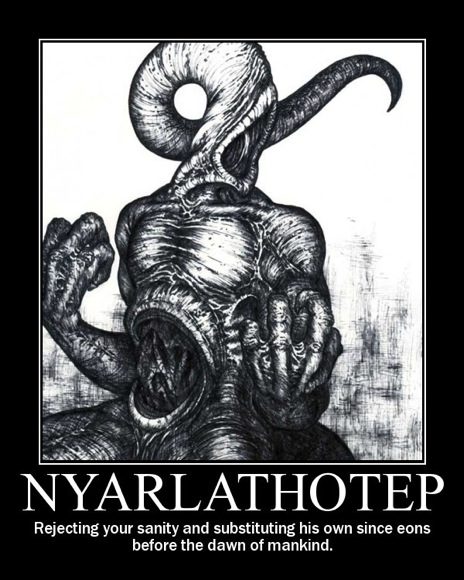
I never warmed to Robert Bloch’s Nyarlathoptep stories — they didn’t smell enough of Nilotic mud and natron. I’ve also avoided Robert M. Price’s Nyarlathotepian collection for fear of diminishing returns. Pugmire, though, comes at the being obliquely, and more effectively than anyone has since Drake’s “Than Curse the Darkness.” Other Nyarlathotep-avatars might be David Bowie’s leper messiah Ziggy Stardust and Stephen King’s Randall Flagg. Even Mythos-mindedness has its own blasphemies, and roping in Flagg here will seem blasphemous to some, but prior to the catastrophic villain-vitiation of The Dark Tower (2004) he is a hauntingly Nyarlathotepian figure. Flagg made himself known to the college-age King in a poem, “The Dark Man,” and it would be unsurprising to learn that the poem was preceded by a dream. Of the inception of The Stand (1978), the key Flagg-text, King confided to Douglas Winter “I wrote ‘A dark man with no face,’ and then glanced up and saw that grisly little motto again: Once in every generation, a plague will fall among them.”
Winter’s superb description of Flagg as “the last magician of rational thought” snags the duality of Nyarlathotep as well. Flagg would seem to have made a place for himself in Winter’s imagination as well as King’s, for the critic also perceives the Walkin’ Dude as “a Miltonic superman whose strength originates in dark mystery, the distant successor of Eblis, ruler of the realm of despair in William Beckford’s Vathek (1786).” Eblis/Nephren-Ka/Nyarlathotep/Randall Flagg. The “pharaoh-charlatan” moved Fritz Leiber to ask “what meanings can most suitably be read into him, granting that, by him, Lovecraft may not consciously have ‘meant’ anything.” Joshi sees “the misuse of science,” Leiber, “the blatantly commercial, self-advertising, acquisitive world that Lovecraft loathed (Nyarlathotep always has that aura of the salesman, that brash contemptuousness).” And also, it seems to me, implications for cosmicism — yes, Nyarlathotep is, as Pugmire says, “quintessentially cosmic,” but although not anthropocentric in essence, he is anthropomorphic of exterior. He walks, and talks, among us; like Sauron or Randall Flagg, he’s an indifferentism-dispeller.

Peter Ackroyd says of Poe “He was the most calculating of authors, never to be confused with his disturbed and even psychotic narrators. Poe the writer strived carefully after the most extreme effects.” Lovecraft was a careful and calculating striver too; what he did was hard, if often depressingly unpaid, work. The Cold Print site offers “A demon by daylight,” an interview with Ramsey Campbell wherein the creator of Goatswood says of HPL “I think one has to go back and look at what he actually did — which was to bring together essentially the tradition of supernatural horror up to that point, building on what he saw as their strengths and also I think doing away with what he saw as their weaknesses.”
And a heart beats at the core of the Lovecraft phenomenon, an organ as powerful and more paradoxical than the eponymous organ donation of Howard’s “Old Garfield’s Heart.” Although a temporal castaway forever pining for the powdered, unroiled classicism of his (idealized, pre-1776-and-1798) 18th century, a reactionary in many ways, he was also a revolutionary who packed tired genre tropes into a tumbrel cart for a date with Madame la Guillotine, a stake through the heart of whole nests of vampires and a silver bullet between the eyes of whole packs of werewolves. It behooves current and future weirdists to locate equivalent fault-lines in their own internal landmasses. To go Outside, they should first go deep Inside.
As per Campbell, paramount among the “first principles” of Mythos stories is “to give glimpses of something larger than they show.” Too many stories go smaller instead, reduce Kadath in the Cold Waste to the Santa’s castle of a snowglobe. Grant us degradations of rationalism, fissures in the whatness of reality, the frisson Joshi has called “the sentiment of ontological horror,” when our awareness of being turns on us like a rabid seeing-eye dog. The most memorable Mythos tales wrest both our future and our past away from us, subvert both scriptural and secularized triumphalist narratives, sabotage mighty engines of progress on their launchpads at Eden or Olduvai Gorge.
We should never get too comfortable, feel too complacently at home, in the House of Being, and Mythos fiction worthy of the name keeps us on our no longer prehensile toes. In Rise and Fall Joshi praises Donald Wandrei for “attempting the nearly impossible” in Dead Titans, Waken!, to “envision utterly non-human and unearthly entities and forces.” While we can’t ever really get out of our own way, look at ourselves through the eyes that came before us, or those that will come after us, it does us good to try, and superior Mythos fiction, or superior weird fiction that celebrates the Lovecraftian legacy, should try even harder, travel even farther.

